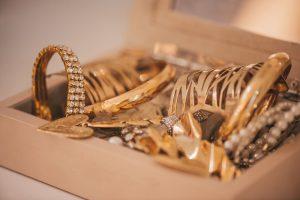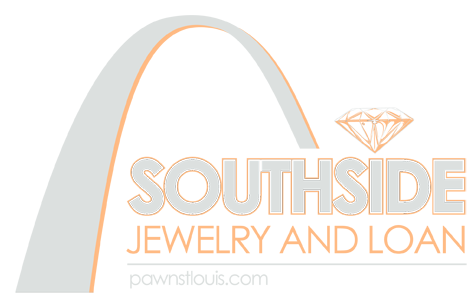Key Takeaways

-
Jewelry loans can be a quick source of cash if you are willing to use your valuables as collateral.
This method is a convenient option for anyone who needs cash fast.
-
To secure a jewelry loan, you’ll need to research potential lenders.
Then, get your jewelry ready for it to be appraised, and educate yourself about the terms of the loan agreement.
-
Jewelry loans give you fast cash when you need it.
However, be mindful of the risks, such as high interest rates and potential loss of your collateral should you fail to make payments.
-
Explore alternatives to jewelry loans.
Personal loans or credit cards may be better depending on your financial situation.
-
If you’ve got bad credit, no problem!
Look for lenders that specialize in providing financing to individuals with less-than-perfect credit histories.
-
Always consider whether a jewelry loan or any other financing option fits your budget and repayment plan.
A jewelry loan can be a quick way to obtain cash. It also poses its own distinct challenges that you need to be aware of.
It can be tempting to use your treasures as collateral. You should be familiar with the process and weigh the pros and cons.
Jewelry loans offer fast cash without the time-consuming credit checks. They’re not without their risks, including the potential for losing your prized possessions.
If you’re reluctant to pawn your jewelry, that’s okay. You can look into options such as layaway plans or appraisal services for alternative routes to your financial aid.
Understanding Jewelry Loans
What Is a Jewelry Loan?
A jewelry loan is a financial service that lets you convert your valuable items into cash. If you have the right items, you can use possessions like diamonds or luxury watches to collateralize the money you need.
In this arrangement, the borrower offers to put their jewelry as collateral. This allows them to access funds quickly, without the lengthy credit checks typically associated with traditional loans.
Lenders also assess the jewelry’s worth, which will affect the amount of money you can borrow. Unlike traditional bank loans, jewelry loans don’t rely on a long credit history; they base the loan on the value of the collateral.
How to Qualify for a Jewelry Loan
To apply for a jewelry loan, you’ll need certain documentation. This will usually include valid identification and proof of income.
During the evaluation process, lenders consider the value of the jewelry and the borrower’s financial situation.
The most important thing is to understand your jewelry’s market value. It also has a direct impact on how much money you can get with a loan before you even apply.
In the U.S., the average pawnshop loan is about $150. This demonstrates that even small things can become cash in a hurry.
Types of Jewelry Eligible for Loans
Common types of jewelry accepted as collateral include engagement rings, necklaces, and luxury watches. The condition and brand of jewelry are the most important factors in whether it’s eligible for a loan. Well-maintained pieces from reputable brands are likely to net you higher loan values.
Unique or designer items can sometimes be worth more than the average price because they are rare and in high demand. For example, lenders can disburse up to 80% of the current gold value depending on market conditions and quality.
Steps to Obtain a Jewelry Loan
1. Assess Your Jewelry’s Value
The first step in getting a jewelry loan is to determine your jewelry’s worth. A professional appraisal will help you understand the value of the property. This is vital information to have when you go to negotiate the loan amount.
You’ll want to compare several appraisals as well to make sure you’re getting an accurate valuation. Knowing your jewelry’s resale value will give you negotiating confidence. It will also help you get more money on your loan.
2. Find a Reputable Lender
Look for lenders who offer jewelry loans and have reviews from positive customers. Knowing their credentials and reputation in the industry is essential before moving on.
Look for transparency around loan terms and fees. By doing this, you’ll avoid many of the mistakes that can make your life worse later.
Reputable lenders maintain your jewelry in stringent facilities. These locations are monitored 24 hours a day, so your items will remain safe while you enjoy the benefits of your loan.
3. Submit Required Documentation
If you find a lender that works for you, collect the documentation needed to apply.
Essential documents typically consist of identification and proof of income. Lenders may request additional information based on your unique situation.
Make sure you provide accurate and complete information, which can help avoid slowing down your approval process.
4. Agree on Loan Terms
It’s vital to understand the loan terms before signing anything. Make sure to review interest rates, repayment schedule, and any fees that may apply to the loan.
Negotiate terms that fit your budget, so you can make repayments comfortably.
Learn about what can happen if you miss a payment or pay late. Missing those payments can have a big impact on your finances.
5. Receive Your Funds
If you move through the application process successfully and agree to the terms, it will approve your loan.
After that, you’ll get your money!
Usually, you’ll receive this via direct deposit or check within 1 to 2 business days.
It’s important to note the dates on which you’re expected to make repayments to remain in good standing and avoid complications.
Advantages and Disadvantages
Benefits of Jewelry Loans
Jewelry loans have many benefits and can be a good option if you need fast cash.
One key benefit is the flexibility these loans provide. Borrowers can use the funds for all sorts of financial needs, from emergencies to planned purchases.
People with bad credit histories can frequently obtain jewelry loans. Since they bypass extensive credit checks, the process is easier for pawn shops.
Another noteworthy point is it may offer a lower interest rate than unsecured loans.
Pawn shop loans typically charge about 25% interest. Borrowers have a 30-day repayment period on average.
That compares more favorably to payday or title loans, which might charge APRs of 400% or more.
Drawbacks to Consider
It’s essential for borrowers to weigh the disadvantages of jewelry loans.
The biggest risk is potentially losing valuable collateral if you don’t make payments on time.
If a borrower doesn’t pay back the loan on time, the pawn shop is allowed to sell the item. This allows them to recoup their losses.
Selling your treasured pieces can have emotional implications. The decision to use personal items as collateral should not be taken lightly.
Understanding the total cost of borrowing is important. This cost includes not just interest, but also any fees you may incur.
Borrowers must consider these against their short-term financial needs before availing of a loan.
Alternatives to Jewelry Loans
Exploring Layaway Plans
Layaway plans offer consumers a practical way to buy jewelry over time without going into debt.
You pay for an item in small increments until you’ve paid the full price. This strategy helps you avoid interest charges since you’re not taking out a loan.
The retailer keeps ownership of the jewelry until you have fully paid for it. That means you’ll only get the item once your payment is fully processed.
It is important to understand the terms of layaway agreements before committing.
When it comes to a layaway plan, look at the payment schedule. Be mindful of fees for missed payments and the total length of the layaway period.
When you clearly understand these elements, you can make informed decisions that work with your financial situation.
Understanding Appraisal Services
Appraisal services offer professional assessments of your jewelry’s market value. That’s important information if you’re considering selling your pieces or getting a loan using them as collateral.
Certified appraisers base their assessments on condition, market trends, and intrinsic value. The documentation they offer can make it easier for you to negotiate more favorable financing terms. If you use your jewelry as collateral, this support will be invaluable.
Make it a point to select only certified appraisers to ensure accurate assessments. Their expertise ensures you receive a fair market value for your jewelry.
That assessment can have a huge impact on the money you’ll spend.
Wondering how much your jewelry is worth?
Professional appraisals give reliable documentation when you need it, whether you’re trying to understand worth or get a loan.
In addition to layaway and appraisal services, other financing options are available for consumers. Personal loans and credit cards may offer more flexibility in how you finance your purchases.
For example, personal loans typically have a fixed interest rate and scheduled payments.
Home equity loans and home equity lines of credit (HELOCs) are two ways homeowners can unlock their home equity. They can borrow up to 95% of it for big purchases, like luxury jewelry.
Financing Options for Bad Credit
Jewelry Financing Without Credit Checks
Some lenders offer jewelry loans with no credit check. This option is attractive to those with bad or limited credit history. This allows borrowers to gain access to funds without the anxiety of conventional credit checks.
For example, Daniel’s Jewelers has financing that approves all credit backgrounds.
The main benefit of this type of financing is accessibility.
Approximately 34.8% of Americans have credit scores that fall between 580 and 669. Many people actively look for alternative financing options to buy the jewelry they desire.
You need to know the terms that come with these loans, such as the interest rates and repayment terms.
Borrowers need to remain vigilant to potential risks. If they don’t manage their debt responsibly, that can turn into a nightmare in a hurry.
Differences Between Leasing and Loans
It is important to understand the difference between leasing jewelry and taking out a loan against it.
With leasing, you’ll make ongoing payments for use of the jewelry but won’t actually own the piece.
A loan enables the borrower to put jewelry up as collateral. This allows them to retain ownership of the item while using it as a way to secure the loan.
Leasing typically comes with long-term payments but doesn’t accumulate equity into the asset.
Loans allow the borrower to eventually own the jewelry outright upon fulfillment of their payment obligations.
This distinction has significant implications for ownership rights and financial obligations.
Therefore, they should consider which one is better for their finances before proceeding.
Conclusion
Jewelry loans provide a viable option for people who need fast cash. You should weigh the benefits and drawbacks first.
Understand the process, and examine your options. This way, you can avoid possible traps and ensure you make a truly informed decision that matches your real estate objectives.
If you’re considering a jewelry loan, see what options are available. Just knowing what your options are may enable you to wield your financial power more effectively.
If you’re ready, the next step is to do your homework and get in touch with trusted lenders.
Ask plenty of questions to clarify any doubts. Your financial well-being is worth the effort; it’s time to talk today!
Frequently Asked Questions
What is a jewelry loan?
A jewelry loan is a secured loan that uses your jewelry as collateral.
If you don’t repay, the lender can take possession of the item.
How do I apply for a jewelry loan?
To apply, locate a reputable lender, bring your jewelry in for appraisal, and fill out the application.
Be ready to show ID and proof of ownership.
What are the typical interest rates for jewelry loans?
Interest rates depend on the lender, but most fall between 10% and 25%.
The best way to make sure you’re getting the best rate is to compare offers.
Can I get a jewelry loan with bad credit?
Many lenders provide jewelry loans regardless of credit history, as they are collateralized by your jewelry.
Terms may be less favorable.
How long does it take to receive funds from a jewelry loan?
Most lenders release funds within hours or days of approval.
Speed will vary based on your lender’s policies and your documentation.
What happens if I can’t repay my jewelry loan?
If you cannot repay, the lender keeps your jewelry by way of repayment.
It’s important to know this risk before you borrow.
Are there alternatives to jewelry loans?
Yes, you can use alternatives such as personal loans, pawn shops, or selling unneeded items.
Consider each option carefully based on your financial circumstances and needs.

